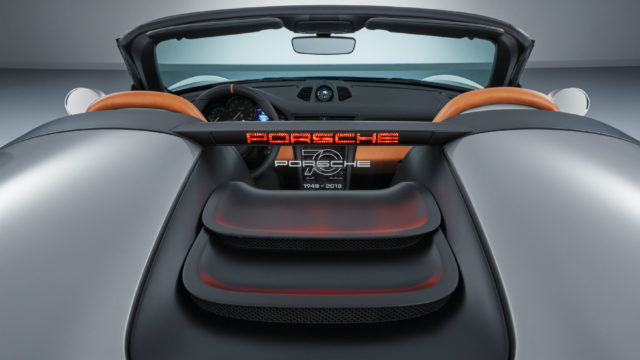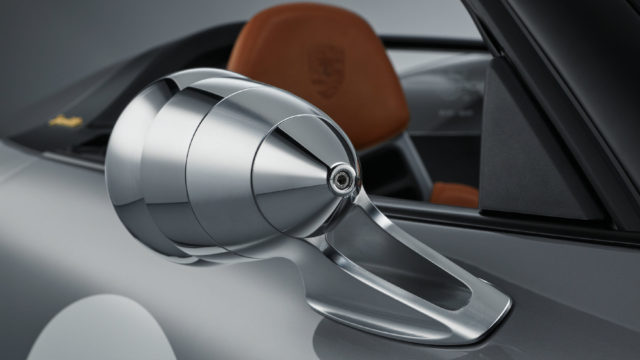Porsche 911 Speedster Concept Is Absolutely Stunning
The broad body of the concept car has been borrowed from the 911 Carrera 4 Cabriolet, although the wings, front bonnet and rear cover of the concept are made of lightweight carbon-fiber composite material. The paintwork in the traditional colours of GT Silver and White harks back to Porsche’s early racing cars – as do many of the other carefully crafted details, such as the 50s-style central fuel tank cap positioned in the middle of the front bonnet, the classic Talbot shape of the exterior mirrors or the unique design of the main headlights. Transparent and opaque surfaces on the headlight covers produce a cross-like effect and are a nod to a practice prevalent in Porsche’s early years in motorsport. At the time, the original headlights were taped before races to protect them against stone chipping and to prevent the glass from shattering. The wide B-pillars and the rear are decorated with milled, gold-plated Speedster lettering.
Below the bodywork, the 911 Speedster Concept relies on state-of-the-art components. The chassis essentially comes from the 911 GT3, with contrasting high gloss polished clover-leaf details on the imposing 21-inch rims in Fuchs design. It is the first time that these wheels are presented with center locks. The GT developers also contributed the exhaust system with titanium tailpipes and the powertrain, which includes a six-speed manual transmission. The six-cylinder flat engine in this minimalist concept study delivers over 500 hp and reaches speeds of up to 9,000 rpm.
The history of Porsche Speedster models begins in the USA
Speedster variants of sports car models, which combine open-top driving pleasure with incredibly distinctive driving dynamics, have been part of the Porsche company history since 1952. The forefather of Porsche Speedster models, the 356 1500 America Roadster, had an aluminum body manufactured entirely by hand. It weighed 60 kilograms less than the 356 Coupé and its top speed of 175 km/h with its 70-hp four-cylinder flat engine was an impressive feat at the time. Featuring slot-in windows for the doors, a folding rain-cover top and lightweight bucket seats, this car developed exclusively for the US market was built just 16 times and already embodied several key elements of the Speedster design.
By 2010, eight different series and special models had been created with the ‘Speedster’ byname. The 356 A 1500 GS Carrera GT Speedster represented a highlight in 1957, and the first 911 Speedster followed in 1988. The 356 units of the 911 Speedster produced for the 997 series in 2010 saw a temporary end to the production of Speedster variants.



